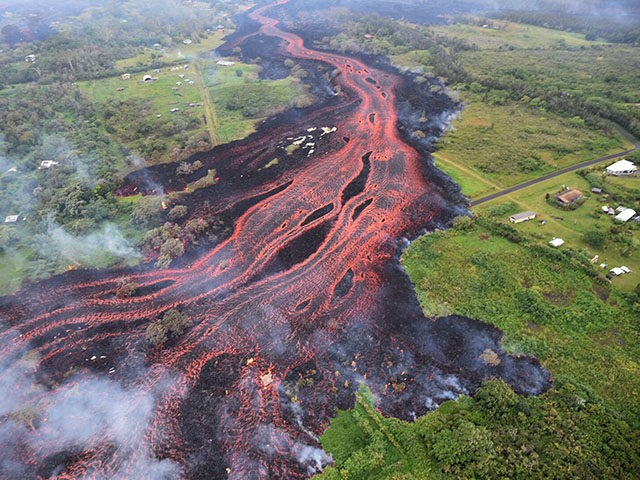The eruption of Kilauea volcano in Hawaii sparked new safety warnings about toxic gas on the Big Island’s southern coastline after lava began flowing into the ocean and setting off a chemical reaction.
The molten rock started pouring into the sea over the weekend, generating plumes of lava haze or “laze” as it interacts with seawater.
Describing her physical reaction to the gas, Pahoa resident Stefani Hinkle told CNN, “I would take one breath, and it would hurt, adding, “As soon as you get it in your mouth, you want to spit.”
“Once I realized what was going on, I put on the particulate mask that they gave us.”
This gas is just the latest hazard from a weeks-old eruption that has so far generated earthquakes and featured gushing molten rock, giant ash plumes, and sulfur dioxide. The eruption has destroyed more than 40 buildings forced more than 2,000 people to evacuate.
United States Geological Survey (USGS) captured dramatic footage of lava entering the ocean near Kīlauea Volcano’s Lower East Rift Zone.
On Monday, lava entered and then stalled on the property of a geothermal plant near one of Kilauea’s new volcanic vents. Officials earlier this month removed 50,000 gallons (190,000 liters) of stored flammable gas from the plant to reduce the chance of explosions.
Hawaii County spokeswoman Janet Snyder said the lava stalled behind a berm on the property boundary.
The plant harnesses energy from the volcano for electricity. Underground wells bring up steam and hot liquid, and the steam feeds a turbine generator.
The Associated Press contributed to this report.

COMMENTS
Please let us know if you're having issues with commenting.